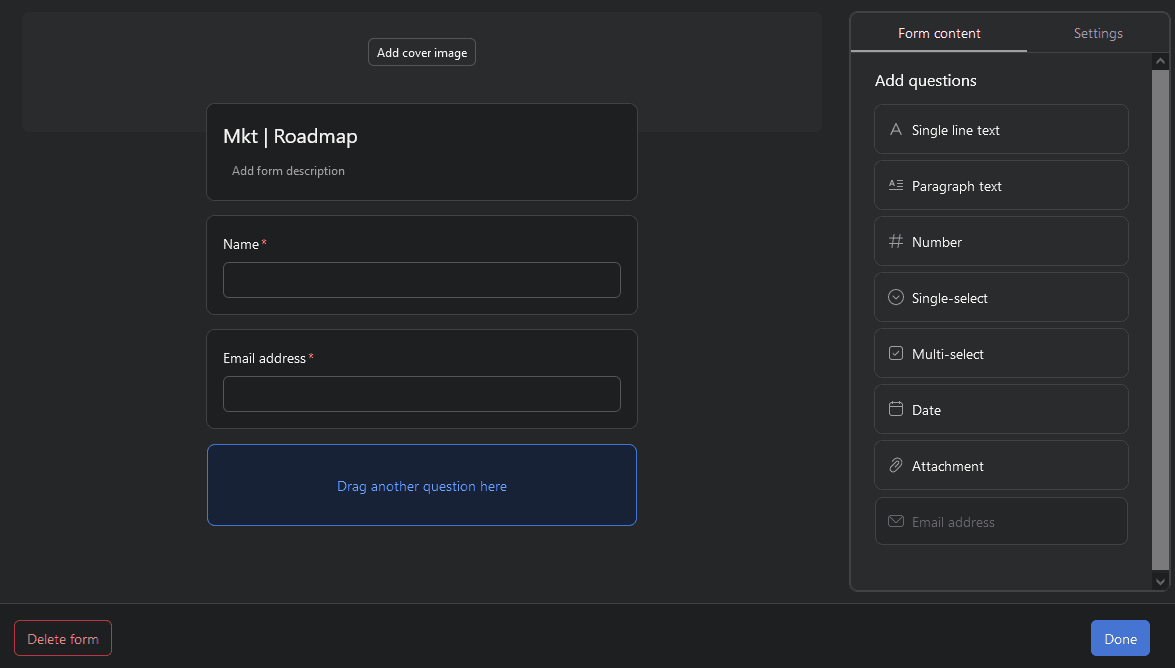8 Transformative Ways You Can Use Project Management Automation (And Why)
Does it seem like your day is shorter than everyone else’s? It’s 5pm and everyone else is packing up to go home, and you’re still stuck checking off a laundry list of tasks. Maybe it’s because you’re a project manager. Or maybe it’s because you’re the last one in your department to discover the benefits of project management automation.
Find out what project management automation is, what these benefits are, and how you can use automation in your projects.
What is project management automation?
The term “project management automation” refers to any piece of technology that turns a manual task into something automatic for a project manager. A tool that automatically adds data from one source into a spreadsheet — potentially saving you hours of data entry — is an example of automation. If that automated process is used in the context of a project, or managing that project, then it becomes project management automation.
Tons of project management tasks involve manual work that isn’t always necessary. That means it’s a field ripe for automation. Both project managers and their collaborators can save a ton of time and effort with automation. Here’s why.
The 4 benefits of project management automation
Using project management automation throughout your projects can completely transform the way you run your projects.
Eliminates repetitive tasks
Likely the biggest benefit you’ll get from project management automation is how much repetitive, manual work you’ll eliminate. If, for example, a specific project needs regular status reports for stakeholders, someone’s going to have to go in and do this over and over again. With the right project management automation, you can eliminate that manual work, meaning someone’s going to get a lot of their time back. And that means it also…
Increases productivity
When you’re not constantly bogged down with busy work and repetitive manual tasks, you can put that time towards something more important — like getting that big deliverable out. One of the big struggles of project management is making the most of the time each collaborator can dedicate to your project. So anything that saves them time will mean more work will go towards those crucial tasks.
Improves communication
But project management automation isn’t just for streamlining tasks and eliminating manual work — it’ll also help with communication, say by syncing Miro to Wrike. Think about it this way. What is a notification but an automated message? Instead of sending emails or chat messages when specific tasks are completed, you can instead use project management apps and other apps to automatically notify collaborators when they need to stay in the loop. That means less busy work for everyone involved, and no one’s left wondering what’s going on.
Prevents mistakes
You’ve surely heard of Murphy’s law, right? “Anything that can go wrong will go wrong.” It’s a law mountaineers, hikers, and survival experts often repeat, and it’s well-known among project managers, too. Complex, clunky manual processes are full of opportunities for something to go wrong. Whether it’s an email that’s not sent, a message that goes unread, or a file that’s never printed, any time a person has to perform a task manually, there’s a chance it’ll go wrong. We’re all human, after all. But because automations aren’t human, they don’t forget. And that means fewer mistakes.
Now that you’re on board, let’s dive into how you can roll out project management automations throughout your projects.
4 ways you can use project management automation
Project management automation is a broad term that encompasses a ton of tools, platforms, and features that you can use to make your projects run smoother. Whether you want to add a dedicated tool that does nothing but deploy automations throughout your project or just find automations in the tools you’re already using, here are four ways you can automate your projects.
Streamlining and triaging incoming requests
As a project manager, you’ll constantly be dealing with incoming requests. These can come from stakeholders asking for updates, collaborators needing more time for a specific task, or even other teams looking for your latest deliverable. Without a system in place to handle this, you’ll be drowning in emails and notifications.
Some tools, like Asana, have automations you can use to streamline this process and make it a lot more manageable. In Asana, you can use forms to standardize the way these requests come in and automatically assign them to the right person.

It’s a lot better than sifting through emails.
Dispatching tasks and follow-ups
Incoming requests are just the beginning of your task management woes. Once the work has been approved and scoped, you actually have to get it out to the right person. That’s fine when you’re dealing with an initial batch of tasks, but as follow-ups and review tasks start to mount, just managing that work becomes its own full-time job!
That’s why some tools have automations you can use to automatically handle this process. In ClickUp, for example, you can turn comments in a task into its own task. That means you can quickly make sure it doesn’t fall through the cracks.
These little features can save you a couple of minutes each time, all while ensuring that important information isn’t lost in the shuffle.
Automating reporting
Reporting is a huge part of project management. Stakeholders want to know how things are going, individual collaborators need to be advised when things go wrong, and you might have to give team leads visibility on how many hours their teams are spending on your project.
But reporting can be a big headache. More than half of people who build reports as part of their job say that collecting data from multiple sources is one of the biggest challenges with reporting. Not to mention all the work they have to put into it.
That’s why any project management automation that can make this process easier is a huge productivity boost. A tool like Unito, which automatically syncs data between tools, can be a great way to streamline your reports.
Closing the gap between tools
Project managers rarely get to work exclusively out of one tool. If their project involves multiple teams, they’ll often be the ones jumping back and forth between tools to make sure everyone’s up to date. Even if everyone on the project works out of the same tool, reporting and budgeting alone can each involve their own tools.
That’s when you need a project management automation that can push data between your tools and keep everything in sync. That way, you know they everything’s updated across your stack without any manual input.
So what’s the best tool for doing that?
Unito: full-fledged project management automation tool
Unito is a project management automation tool with the deepest two-way integrations for some of the most popular tools on the market. That includes project management tools like Asana, Trello, ClickUp, and monday.com, but also developer-focused tools like Jira, GitHub, and GitLab. With more than 30 integrations, you can sync data back and forth between tools so everyone’s in the loop no matter where they’re working from.
With a Unito flow, you can build automated reports in spreadsheet tools like Google Sheets and Excel, dispatch work across multiple project management tools, and automate repetitive manual processes.


